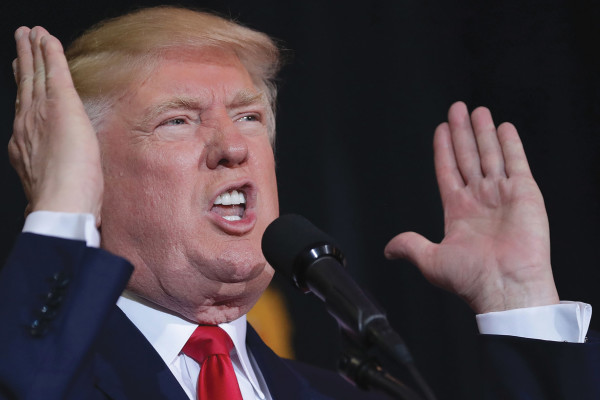
Article 1 / 5
The Guide: Outlook for 2017Politics expected to remain ‘key driver of uncertainty’ in 2017

Unexpected is one way to describe 2016. The decision by the UK to leave the EU and the election of Donald Trump as US president both contributed to make the second half of the year, in particular, an interesting one. For investors, this created both opportunities and disappointments, and uncertainty seems to be the watchword as we move into 2017.
For example, the latest minutes from the US Federal Reserve emphasised “considerable uncertainty about the timing, size and composition of any future fiscal and other economic policy initiatives, as well as about how those polices might affect aggregate demand and supply”. In spite of this, the minutes’ median projections suggest the central bank will hike rates three times this year.
While 2016 had its ups and downs, is this year going to fare any better? Mike Willans, head of international equities at Canada Life Investments, says: “It has not been hard to comprehend why investors have been so demonstrably bearish in recent months. Investors have been comfortable holding elevated cash levels, with large overexposures to defensive shares and bond proxies.
“However, while this strategy has worked very well for a lengthy period of time, there are signs of change in the air – most notably the jump in global bond yields. With these scenarios out of the way, we would not be surprised if market participants get caught out by the strength of a market rally through the early part of 2017.”
In terms of investment trusts, QuotedData senior analyst Matthew Read says: “2016 has been a year in which financial markets have been characterised by considerable uncertainty moving through risk-on, risk-off phases as investors’ focus shifted to the next big issue. This year looks set to give us more of the same.
“Periods of market disruption and increased uncertainty tend to lead to widening discounts, but an improving outlook could see the discounts of trusts focused on more cyclical areas tighten.
“By contrast, trusts focused on safer assets – including many income trusts – and those that offer returns that are less correlated with traditional equity markets may see a slackening of demand. This could reverse swiftly if economic forecasts take a turn for the worst, perhaps triggered by bad political news in Europe.”
Mr Read continues: “Markets appear to be in a risk-on phase, having concluded that Mr Trump’s policies are likely be business-friendly and that there is a lot of resistance to a hard Brexit. Cyclical stocks have benefited. Some might conclude that the next big move is down as markets inevitably hit a bump in the road, [but] there is no clear answer. While it may be difficult to identify the next big move in markets, investors should look at the diversification within their portfolios, identifying any concentration risks.”
But although uncertainty could be a problem for some in 2017, it’s not all doom and gloom. David Coombs, manager of the Rathbone multi-asset portfolios alongside Will McIntosh-Whyte, notes: “While politics will continue as the key driver of uncertainty in 2017, leading to the potential for policy errors, markets will struggle to discount effectively. This should create anomalies and therefore opportunities that active managers can exploit, both in stock selection and asset allocation. But this difficulty to price assets could significantly increase portfolio risk as markets react to every news point.
“Investors will have to be nimble and hold their nerve in 2017, because it’s not going to be an easy year,” Mr Coombs adds.
Nyree Stewart is features editor at Investment Adviser



